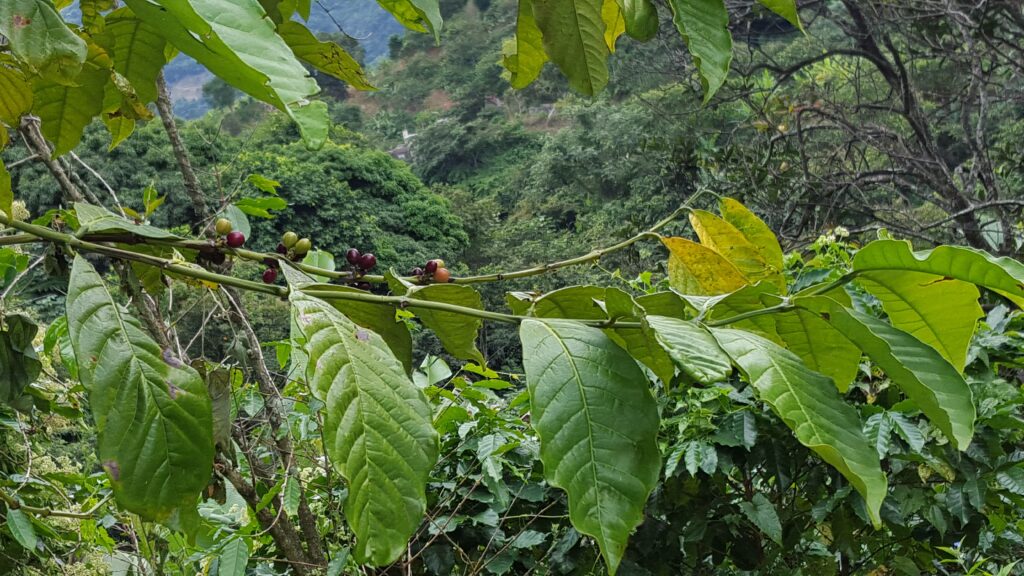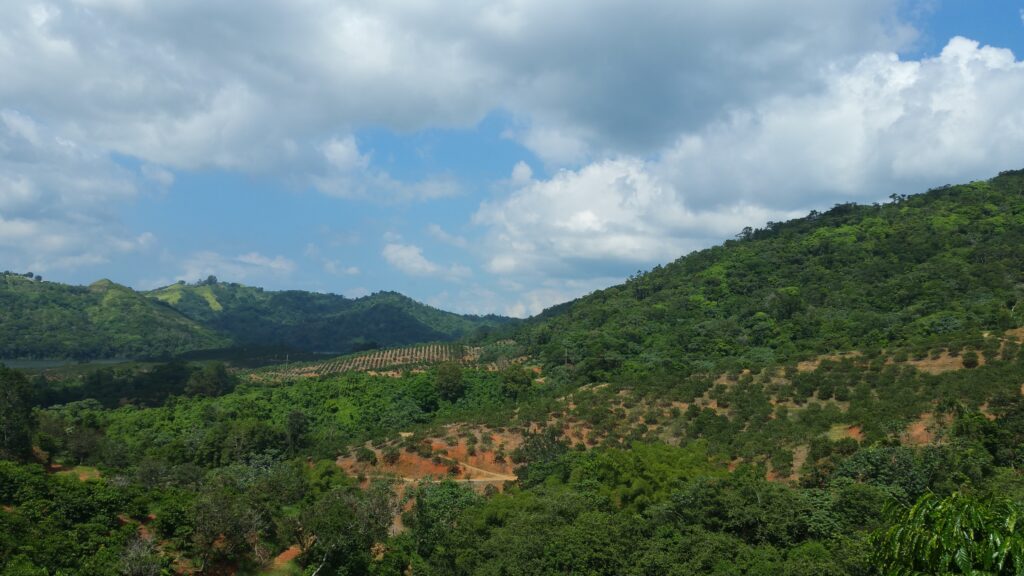Member interview: ALC researcher publishes paper on Puerto Rican coffee farmers’ participation in conservation programs
ALC graduate student Tatiana Gladkikh is the lead author of a paper that was published in January in the journal Conservation Science and Practice. In it, she and colleagues present results from a survey of Puerto Rican coffee farmers about their experience with, and willingness to take part in, conservation programs. Fellow ALC graduate student Sam Bliss interviews her here about that research and the article that’s come from it.
Sam Bliss: Your article is titled “Factors that influence participation of Puerto Rican coffee farmers in conservation programs.” Briefly, what are those factors?
Tatiana Gladkikh: One of the main factors, unsurprisingly, was financial considerations. Conventional sun farming is associated with higher yields in the first farming years, so a transition to shade farming would need to be accompanied by a compensation for reduced yields. Interestingly, economic incentives were only the third most frequently mentioned factor. The most commonly mentioned theme was the need for increased outreach from government agencies, followed by demonstrated commitment from the government. Another factor was land use flexibility, meaning conservation programs that balance agricultural and conservation objectives. Respondents also mentioned that cooperation among farmers was important. These factors came up after we qualitatively analyzed farmers’ responses.
SB: It seems like coffee growers want government money to be able to adopt sustainable practices, but that they’re afraid that the government will have too much control over their farming. Is that right?
TG: Yes and no, as the importance of financial incentives is independent of land use flexibility. Some farmers in our study were concerned with land use flexibility surrounding the local Model Forest policy. Participation in this policy is voluntary yet many farmers did not perceive it as such, partially because the policy was poorly communicated to stakeholders. Some respondents perceived it as an imposition on their land management authority and they questioned the need for conserving on active farms when they saw many abandoned farms in the region.
SB: What can governments do to support farmers in making ecological choices without taking away their autonomy over decision making and land management?
TG: I think a lot of it is outreach and effective communication strategies. For example, a lot of federal conservation programs promote their programs online and in English, yet many farmers live in remote areas with limited access to the internet, and some of them don’t speak English fluently. Another effective strategy could be model farmers; many farmers learn about existing incentives and farming practices from their peers. Some conventional farmers never practiced shade farming before and are skeptical of its profitability. Perhaps, if they could visit a shade farm of a fellow farmer they know and trust, they could directly experience this farming practice and be more open to a transition. Agencies should also include farmers in the design of conservation programs and consider farmers’ needs. In our study, some respondents noted that some shade trees species provided by the agencies created more hassle for the farmer than benefits. So some ended up replacing those shade trees with other trees that met their needs. There should be more dialogue between farmers and agencies, more conversations about what works, what is needed. This study is one example of these attempts; local environmental agencies wanted to know how they could make existing conservation programs more appealing.
SB: Do you think that making these changes to existing programs can make a big difference for the environment or for farmers? Or would it be preferable, if possible, to start over with redesigned policy?
TG: There have already been too many “start overs” in Puerto Rico with every new administration, which in turn undermines trust in the government’s stability and commitment. So I think making changes to existing programs would be more efficient. I am not sure about the impact that these changes can bring. I am not being pessimistic, I just want to acknowledge the complexity of the issue. By and large, coffee farming in Puerto Rico is not very profitable and it is very laborious. Changes to conservation programs alone are not enough to revive the local coffee farming industry. Sure, some might say that abandonment of coffee farming is beneficial to conservation objectives — in a few years, abandoned coffee farms turn into flourishing forests. In the tropics, everything grows so much faster! But economically, and culturally, coffee is very important to that region of the island. Changes to existing programs, thus, should address improvements of both environmental and economic outcomes. My suggestion would be to create some kind of certification or specialty coffee program. A few years ago, there was an attempt to create a local certification, something similar to the frog and the Rainforest Alliance. But it did not go anywhere, I am not sure why, probably lack of funding.
SB: What does this research contribute to agroecology as a movement?
TG: Our study reiterated the importance of local research, livelihoods, and consideration of power relationships that shape land management. In Puerto Rico, state agricultural incentives favor conventional sun farming, while conservation incentives target a transition to shade farming. So farmers are placed in a position of having to choose between these two incentives programs; some practiced sun farming just to be eligible for state incentives. Profits from small-scale coffee farming are very low, unless you have access to speciality coffee markets or income diversification strategies (such as through agrotourism and other crops). It is unreasonable to expect farmers to transition to shade-grown coffee without addressing the issue of financial insecurity.
SB: Did you carry out any of the interviews? If so, what did you learn from talking to these coffee farmers that didn’t make it into the article?
TG: Yes, I carried out almost half of the 89 interviews we completed. We did not really touch on the issue of the coffee market in this article, but we did talk a lot about it. I learned so much about the coffee-making process and the amount of time, labor, and money involved in producing a cup of good quality coffee. We discussed competition with large-scale commercial producers and hurdles associated with the ability to access the gourmet coffee market that has higher profits. Farmers took a lot of pride in growing local coffee but they lamented that most of the commercial coffee sold in Puerto Rico was mixed with imported coffee. This definitely changed the kind of coffee I buy: I mainly buy Puerto Rican coffee, and I always make sure that it is 100% grown and produced in Puerto Rico, rather than a commercial mix of local and imported coffee.
SB: What did the farmers think of this research project?
TG: They really enjoyed talking to us! Many treated us to a cup of coffee or fresh produce from their farms. Certainly, there was a level of skepticism about the ability of our study to make any difference, which is something I am sure many researchers have encountered. But I think participants appreciated having their stories heard.


